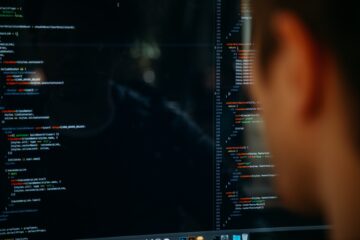In the vast realm of Linux, where countless commands and operations shape the digital landscape, error codes act as subtle messengers. They whisper tales of triumphs and challenges, providing crucial insights into the inner workings of the system. Whether you’re a seasoned Linux user or a curious newcomer, understanding these error codes is essential for unraveling the mysteries that lie beneath the surface.
Linux error codes serve as a silent language, conveying information about the outcome of operations, the status of resources, and the state of the system. They reflect the triumphs of successful operations, the frustrations of permission denials, and the challenges encountered during input/output processes. Behind each error code lies a story, waiting to be deciphered and resolved.
This article embarks on a journey to demystify Linux error codes, shedding light on their meanings and implications. We will delve into the realm of permissions, file systems, devices, and network connectivity, exploring the diverse scenarios where these error codes emerge. By unraveling the language of error codes, we aim to empower Linux users to tackle issues more effectively, troubleshoot with confidence, and make informed decisions in the face of adversity.
Throughout this exploration, we will not only decode the technical aspects but also provide a human touch. Understanding Linux error codes requires more than mere technical comprehension—it necessitates a connection to the challenges, frustrations, and triumphs experienced by users. By embracing a human perspective, we aim to make this journey accessible to readers of all backgrounds, fostering a deeper appreciation for the intricacies of the Linux operating system.
So, whether you’ve encountered an enigmatic error code during a routine task or are simply intrigued by the inner workings of Linux, join us as we unravel the secrets embedded within the error codes. Together, we will navigate through the realms of permissions, processes, file systems, network communications, and much more, ultimately emerging with a clearer understanding of the language spoken by Linux error codes.
List of error codes in Linux
| Error Code | Description |
|---|---|
| EPERM | Operation not permitted: The requested operation is not allowed for the current user or process. |
| EACCES | Permission denied: The user does not have sufficient permissions to perform the operation. |
| ENOENT | No such file or directory: The specified file or directory does not exist. |
| ESRCH | No such process: The specified process does not exist. |
| EINTR | Interrupted system call: The operation was interrupted by a signal. |
| EIO | Input/output error: There was an error during input/output operations. |
| ENXIO | No such device or address: The specified device or address does not exist. |
| E2BIG | Argument list too long: The argument list for the operation exceeds the system-defined limit. |
| ENOEXEC | Exec format error: The executable file format is not recognized. |
| EBADF | Bad file descriptor: The file descriptor provided is not valid. |
| ECHILD | No child processes: There are no child processes to wait for. |
| EAGAIN | Resource temporarily unavailable: The requested resource is temporarily unavailable. |
| ENOMEM | Out of memory: There is not enough memory available to perform the operation. |
| EFAULT | Bad address: The memory address provided is invalid or inaccessible. |
| ENOTBLK | Block device required: The specified file is not a block device. |
| EBUSY | Device or resource busy: The requested device or resource is currently in use. |
| EEXIST | File exists: The specified file or directory already exists. |
| EXDEV | Cross-device link: The operation involves linking across different devices. |
| ENODEV | No such device: The specified device does not exist. |
| ENOTDIR | Not a directory: The specified path is not a directory. |
| EISDIR | Is a directory: The operation expects a file but encounters a directory. |
| EINVAL | Invalid argument: The provided argument is not valid for the operation. |
| ENFILE | File table overflow: The maximum number of files that can be open simultaneously has been reached. |
| EMFILE | Too many open files: The process has reached the maximum number of open files. |
| ENOTTY | Inappropriate ioctl for device: The ioctl operation is not supported by the specified device. |
| ETXTBSY | Text file busy: The requested file is currently being executed or modified. |
| EFBIG | File too large: The file size exceeds the system-defined limit. |
| ENOSPC | No space left on device: There is no more available space on the device. |
| ESPIPE | Illegal seek: The file descriptor does not support the requested seek operation. |
| EROFS | Read-only file system: The file system is mounted as read-only. |
| EMLINK | Too many links: The maximum number of links to a file has been reached. |
| EPIPE | Broken pipe: The reading end of a pipe has been closed. |
| EDOM | Numerical argument out of domain: The mathematical function encountered an argument outside its valid range. |
| ERANGE | Result too large: The result of a mathematical operation is too large to be represented. |
| EDEADLK | Resource deadlock would occur: A resource deadlock has been detected. |
| ENAMETOOLONG | File name too long: The specified file name exceeds the system-defined limit. |
| ENOLCK | No record locks available: There are no more available file record locks. |
| ENOSYS | Function not implemented: The requested function is not implemented on this platform. |
| ENOTEMPTY | Directory not empty: The directory is not empty and cannot be removed. |
| ELOOP | Too many symbolic links encountered: The operation encountered too many symbolic links. |
| ENOMSG | No message of desired type: The requested message type does not exist in the message queue. |
| EIDRM | Identifier removed: The shared memory or message queue identifier has been removed. |
| ECHRNG | Channel number out of range: The specified channel number is out of the valid range. |
| EL2NSYNC | Level 2 not synchronized: The level 2 cache on the system is not synchronized. |
| EL3HLT | Level 3 halted: The level 3 cache on the system has been halted. |
| EL3RST | Level 3 reset: The level 3 cache on the system has been reset. |
| ELNRNG | Link number out of range: The specified link number is out of the valid range. |
| EUNATCH | Protocol driver not attached: The specified communication protocol driver is not attached. |
| ENOCSI | No CSI structure available: The CSI (Control Status Indicator) structure is not available. |
| EL2HLT | Level 2 halted: The level 2 cache on the system has been halted. |
| EBADE | Invalid exchange: An invalid exchange has been encountered. |
| EBADR | Invalid request descriptor: The request descriptor is not valid. |
| EXFULL | Exchange full: The exchange is full and cannot accept more data. |
| ENOANO | No anode: The specified device does not support the required operations. |
| EBADRQC | Invalid request code: The request code is not valid for the specified device. |
| EBADSLT | Invalid slot: The specified slot is not valid. |
| EBFONT | Bad font file format: The font file format is not recognized or supported. |
| ENOSTR | Device not a stream: The specified device is not a stream. |
| ENODATA | No data available: There is no data available on the specified stream. |
| ETIME | Timer expired: The timer associated with the operation has expired. |
| ENOSR | Out of streams resources: The system has reached the maximum limit of streams resources. |
| ENONET | Machine is not on the network: The specified machine is not connected to the network. |
| ENOPKG | Package not installed: The required software package is not installed. |
| EREMOTE | Object is remote: The object is located on a remote system. |
| ENOLINK | Link has been severed: The link to the remote system has been severed. |
| EADV | Advertise error: There was an error in advertising the specified address. |
| ESRMNT | Srmount error: There was an error in mounting the specified shared resource. |
| ECOMM | Communication error on send: There was a communication error while sending data. |
| EPROTO | Protocol error: A protocol error has occurred. |
| EMULTIHOP | Multihop attempted: A multihop operation was attempted. |
| EDOTDOT | RFS specific error: An error specific to the Remote File Sharing (RFS) system has occurred. |
| EBADMSG | Not a data message: The received message is not a valid data message. |
| EOVERFLOW | Value too large to be stored in data type: The value to be stored exceeds the limit of the data type. |
| ENOTUNIQ | Name not unique on network: The specified name is not unique on the network. |
| EBADFD | File descriptor in bad state: The file descriptor is in a bad state and cannot be used. |
| EREMCHG | Remote address changed: The remote address has changed. |
| ELIBACC | Can not access a needed shared library: The shared library required by the program cannot be accessed. |
| ELIBBAD | Accessing a corrupted shared library: The shared library being accessed is corrupted. |
| ELIBSCN | .lib section in a.out corrupted: The .lib section in the a.out file is corrupted. |
| ELIBMAX | Attempting to link in too many shared libraries: The program is attempting to link with too many shared libraries. |
| ELIBEXEC | Cannot exec a shared library directly: A shared library cannot be executed directly. |
| EILSEQ | Illegal byte sequence: The input contains an illegal byte sequence. |
| ERESTART | Interrupted system call should be restarted: The interrupted system call should be restarted. |
| ESTRPIPE | Streams pipe error: An error has occurred in the streams pipe. |
| EUSERS | Too many users: The system has reached the maximum number of users. |
| ENOTSOCK | Socket operation on non-socket: The operation is not valid for a non-socket file descriptor. |
| EDESTADDRREQ | Destination address required: The destination address is required for the operation. |
| EMSGSIZE | Message too long: The size of the message exceeds the system-defined limit. |
| EPROTOTYPE | Protocol wrong type for socket: The protocol specified for the socket is not the correct type. |
| ENOPROTOOPT | Protocol not available: The requested protocol is not available. |
| EPROTONOSUPPORT | Protocol not supported: The requested protocol is not supported. |
| ESOCKTNOSUPPORT | Socket type not supported: The requested socket type is not supported. |
| EOPNOTSUPP | Operation not supported on socket: The requested operation is not supported on the socket. |
| EPFNOSUPPORT | Protocol family not supported: The specified protocol family is not supported. |
| EAFNOSUPPORT | Address family not supported: The specified address family is not supported. |
| EADDRINUSE | Address already in use: The specified address is already in use. |
| EADDRNOTAVAIL | Cannot assign requested address: The requested address cannot be assigned. |
| ENETDOWN | Network is down: The network is down and cannot be reached. |
| ENETUNREACH | Network is unreachable: The network destination is unreachable. |
| ENETRESET | Network dropped connection because of reset: The network connection was reset. |
| ECONNABORTED | Software caused connection abort: The connection was aborted by software. |
| ECONNRESET | Connection reset by peer: The connection was reset by the peer. |
| ENOBUFS | No buffer space available: There are no available buffer space or resources. |
| EISCONN | Transport endpoint is already connected: The transport endpoint is already connected. |
| ENOTCONN | Transport endpoint is not connected: The transport endpoint is not connected. |
| ESHUTDOWN | Cannot send after transport endpoint shutdown: The transport endpoint has been shut down and cannot send data. |
| ETOOMANYREFS | Too many references: There are too many references to the resource. |
| ETIMEDOUT | Connection timed out: The connection has timed out. |
| ECONNREFUSED | Connection refused: The connection request was refused by the remote host. |
| EHOSTDOWN | Host is down: The remote host is down. |
| EHOSTUNREACH | No route to host: There is no route to the remote host. |
| EALREADY | Operation already in progress: The operation is already in progress. |
| EINPROGRESS | Operation now in progress: The operation is now in progress. |
| ESTALE | Stale file handle: The file handle is no longer valid. |
| EUCLEAN | Structure needs cleaning: The structure or object requires cleaning. |
| ENOTNAM | Not a XENIX named type file: The file is not a XENIX named type file. |
| ENAVAIL | No XENIX semaphores available: There are no available XENIX semaphores. |
| EISNAM | Is a named type file: The file is a named type file. |
| EREMOTEIO | Remote I/O error: There was an error in remote I/O operation. |
| EDQUOT | Disk quota exceeded: The disk quota limit has been exceeded. |
| ENOMEDIUM | No medium found: No medium (e.g., disk or tape) was found. |
| EMEDIUMTYPE | Wrong medium type: The medium detected is of the wrong type. |
| ECANCELED | Operation canceled: The operation was canceled. |
| ENOKEY | Required key not available: The required encryption key is not available. |
| EKEYEXPIRED | Key has expired: The encryption key has expired. |
| EKEYREVOKED | Key has been revoked: The encryption key has been revoked. |
| EKEYREJECTED | Key was rejected by the service: The encryption key was rejected by the service. |
| EOWNERDEAD | Owner died: The owner of a resource died and the resource is left in an inconsistent state. |
| ENOTRECOVERABLE | State not recoverable: The state is not recoverable. |






